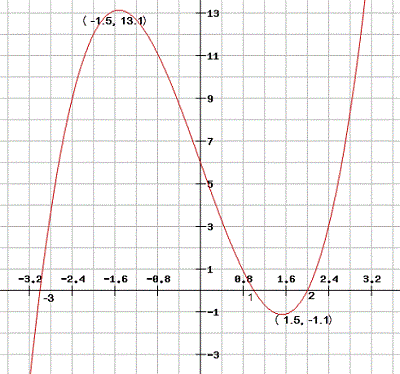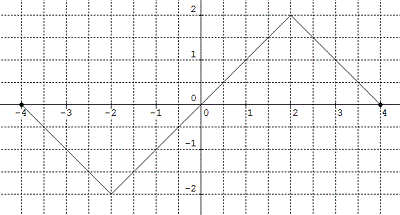10 Multiple Choice Calculus
1.
The graph of f ‘(x) is continuous, positive, and has a relative maximum at x = 0. Which of the following statements must be true? (5 points)
2.
Below is the graph of f ‘(x), the derivative of f(x), and has x-intercepts at x = -3, x = 1, and x = 2 and a relative maximum at x = -1.5 and a relative minimum at x = 1.5. Which of the following statement is false?
 (5 points)
(5 points)
3.
The graph of y = f ‘(x), the derivative of f(x), is shown below. List the intervals where the graph of f is concave down.
 (5 points)
(5 points)
4.
Which of the following functions grows the fastest as x grows without bound? (5 points)
5.
Compare the growth rate of the functions f(x) = x3 + 1 and g(x) = x2 . (5 points)
6.
f is a function that is differentiable for all reals. The value of f ‘(x) is given for several values of x in the table below.
| x | -8 | -3 | 0 | 3 | 8 |
|---|---|---|---|---|---|
| f ‘(x) | -4 | -2 | 0 | 4 | 5 |
If f ‘(x) is always increasing, which statement about f(x) must be true? (5 points)
7.
f is a differentiable function on the interval [0, 1] and g(x) = f(2x). The table below gives values of f ‘(x). What is the value of g ‘(0.1)? (5 points)
| x | 0.1 | 0.2 | 0.3 | 0.4 | 0.5 |
|---|---|---|---|---|---|
| f ‘(x) | 1 | 2 | 3 | -4 | 5 |
8.
Use the graph of f(t) = 2t + 2 on the interval [-1, 4] to write the function F(x), where  . (5 points)
. (5 points)
9.
The velocity of a particle moving along the x-axis is v(t) = t2 + 2t + 1, with t measured in minutes and v(t) measured in feet per minute. To the nearest foot find the total distance travelled by the particle from t = 0 to t = 2 minutes. (5 points)
10.
Find the range of the function  . (5 points)
. (5 points)

